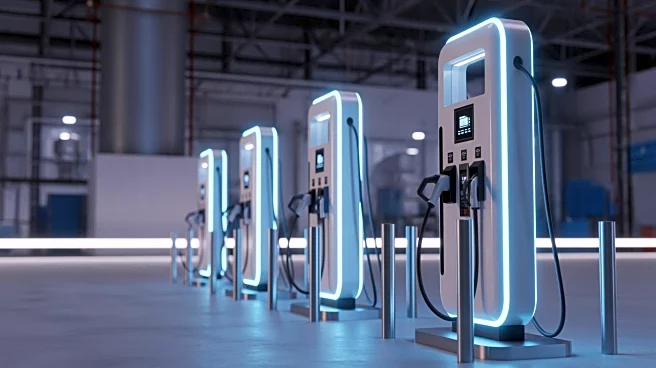What's Happening?
Pearson plc, a global learning company, has announced a partnership between its virtual-school network, Connections Academy, and the Center for Energy Workforce Development (CEWD). This collaboration aims
to guide students towards careers in the U.S. energy sector, integrating CEWD's Energy Industry Fundamentals 2.0 curriculum into Connections Academy's college-and-career readiness track. The curriculum offers approximately 120 hours of online instruction, including labs and interactive exercises, culminating in an industry-recognized credential. This initiative is part of Pearson's strategy to provide career-connected learning by pairing coursework with mentorship and exposure to various energy roles, including fossil, nuclear, and renewable sectors. The program also complements Connections Academy's 'tri-credit' model, which allows students to earn high-school credit, micro-credentials, and eligibility for college credit through partner institutions.
Why It's Important?
This partnership is significant as it addresses the growing demand for skilled labor in the U.S. energy sector, driven by factors such as AI advancements, data-center expansion, and increased energy consumption. By integrating industry-specific education into its curriculum, Pearson is helping to close the 'awareness gap' and build a pipeline of future-ready technicians, tradespeople, and engineers. This move not only enhances the employability of students but also aligns with broader economic trends such as onshoring and the need for a skilled workforce in emerging industries. The initiative could potentially benefit students by providing them with valuable credentials and career opportunities in a rapidly evolving job market.
What's Next?
As the program rolls out, it is expected to attract interest from students and educators seeking to align education with industry needs. The success of this initiative could lead to further collaborations between educational institutions and industry partners, expanding the model to other sectors. Stakeholders, including policymakers and industry leaders, may monitor the program's impact on workforce readiness and consider similar approaches to address skills gaps in other critical industries. The program's outcomes could influence future educational policies and partnerships aimed at enhancing career readiness and economic mobility.











